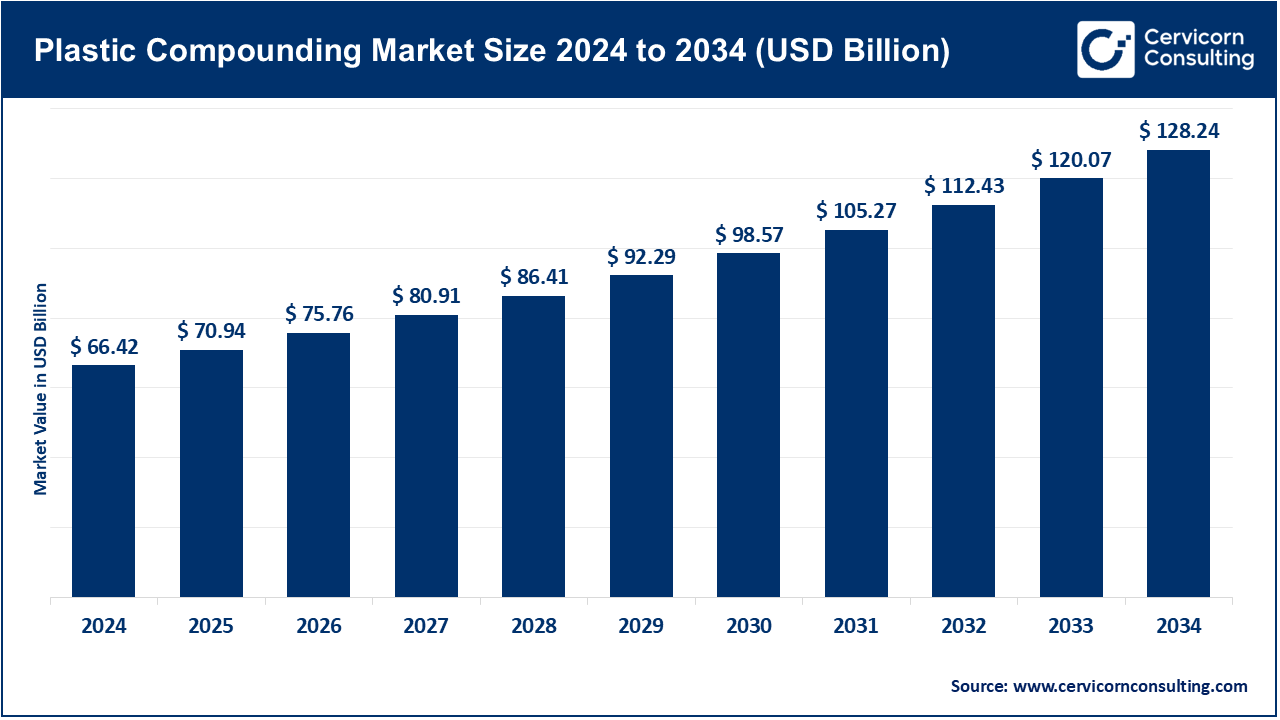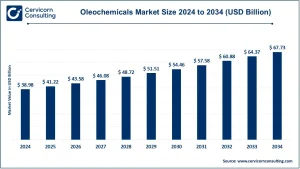Plastic Compounding Market Size
What is the Plastic Compounding Market?
Plastic compounding is the process of blending polymers with additives, fillers, or reinforcements to achieve desired material characteristics that suit specific applications. This process enhances the physical, thermal, and aesthetic properties of plastics, making them suitable for various industries such as automotive, electronics, packaging, and construction.
Scope and Significance
-
Applications: Compounded plastics are utilized in automotive components, electrical and electronic devices, packaging materials, medical devices, and construction materials.
-
Importance: The ability to tailor plastic properties through compounding allows for the creation of materials that meet specific performance criteria, contributing to innovation and efficiency across industries.
Get a Free Sample: https://www.cervicornconsulting.com/sample/2698
Market Trends
1. Technological Advancements
Advancements in compounding technologies, including twin-screw extrusion and in-line blending, are enhancing the efficiency and quality of the compounding process. These technologies enable more control over material properties, shorter processing times, and improved formulation consistency .
2. Sustainability Initiatives
There is a growing emphasis on sustainable practices within the plastic compounding industry. The increasing demand for bio-based and biodegradable plastics is creating new growth paths, driven by environmental concerns and government regulations against traditional plastics .
3. Regionalized Production
The establishment of regional toll-compounding hubs is reducing logistics emissions and enhancing supply chain efficiency. This trend is particularly evident in Asia-Pacific, where rising consumer demand and technological advancements in material processing are fueling market growth .
Market Dynamics
Drivers
-
Automotive Industry Growth: The demand for lightweight and durable materials in the automotive sector is propelling the use of plastic compounds in vehicle manufacturing .
-
Consumer Electronics Demand: The proliferation of electronic devices requires specialized plastics with tailored properties, driving the need for advanced compounding solutions.
-
Infrastructure Development: Expanding construction activities globally are increasing the demand for specialized plastic materials in building and infrastructure projects.
Restraints
-
Raw Material Costs: Fluctuations in the prices of base polymers and additives can impact the cost-effectiveness of compounded plastics.
-
Environmental Concerns: The environmental impact of plastic waste and the challenges associated with recycling compounded plastics pose significant concerns.
Opportunities
-
Recycling Innovations: Advances in recycling technologies are enabling the reuse of compounded plastics, contributing to a circular economy.
-
Emerging Markets: Growing industrialization and urbanization in emerging economies present new opportunities for the plastic compounding industry.
Challenges
-
Regulatory Compliance: Adhering to stringent environmental and safety regulations can increase operational complexities and costs.
-
Supply Chain Disruptions: Global supply chain challenges, including transportation delays and material shortages, can affect the timely delivery of compounded plastics.
Regional Analysis
Asia-Pacific
Asia-Pacific leads the global plastic compounding market, accounting for a significant share due to rapid industrialization, technological advancements, and increasing demand across various sectors. Countries like China and India are major contributors to this growth .
North America
North America is witnessing steady growth in the plastic compounding market, driven by advancements in automotive manufacturing and consumer electronics. The United States and Canada are investing in sustainable practices and technological innovations to enhance production efficiency.
Europe
Europe’s plastic compounding market is characterized by a focus on sustainability and regulatory compliance. Countries like Germany and France are leading in adopting eco-friendly materials and recycling initiatives.
Latin America and Middle East & Africa (LAMEA)
In the LAMEA region, infrastructure development and industrial growth are driving the demand for specialized plastic compounds. Investments in construction and manufacturing sectors are contributing to market expansion.
Recent Developments
-
Technological Innovations: Companies are investing in advanced compounding technologies, such as reactive extrusion and multi-phase blending, to develop high-performance plastic compounds .
-
Strategic Partnerships: Collaborations between compounding companies and end-users are fostering innovation and customization of plastic materials to meet specific application requirements.
-
Regulatory Initiatives: Governments are implementing policies to promote sustainable practices within the plastic compounding industry, encouraging the adoption of recyclable and bio-based materials.
Conclusion
The plastic compounding market is poised for continued growth, driven by technological advancements, sustainability initiatives, and increasing demand across various industries. While challenges such as raw material costs and environmental concerns persist, opportunities in recycling innovations and emerging markets present avenues for expansion. Stakeholders in the industry must navigate these dynamics to capitalize on the evolving market landscape.
Buy Report: https://www.cervicornconsulting.com/buy-now/2701
Read Report: Anti-Drone Market Size, CAGR, Key Drivers, and Emerging Technologies


